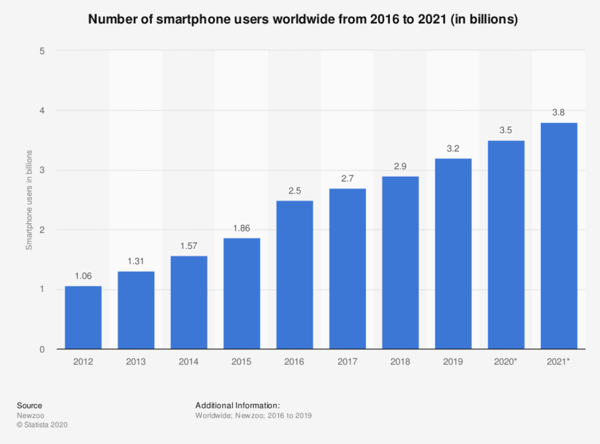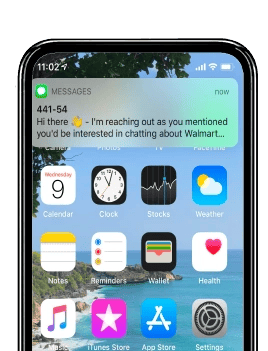
When COVID hit, the ability to capture real-time customer insights using new market research tools became a real competitive advantage. As the Insights Association noted in a recent report, the insights department suddenly became a “window to the world” at a time of so much unpredictability. From operations to sales, different departments relied on insight teams to understand the uncertain and dynamic consumer landscape. Insights earned a seat at the table—even if that table was in a virtual boardroom.
To keep that seat in 2021, insight teams need to increase their visibility and impact and provide foresight on what’s next. They also need to keep up with the growing demand for data and insights—something that new market research tools can help with. Adopting cutting-edge and agile insight platforms can help organizations reach the right audience and get an accurate read on how customer behaviors, routines and habits are changing.
To keep their seat at the table, insight teams need to increase their visibility and impact and provide foresight on what’s next.
If you’re evaluating new market research tools, it’s important to consider the needs of mobile-first consumers. As you’ll see below, thinking mobile-first will not only allow you to be more agile and nimble—it will also help future-proof the success of your team.
Once upon a time, "mobile-first" was associated with young buyers only—specifically millennials and the mobile-first natives, Gen Zs. Not anymore. Today, boomers and Gen Xers are just as likely to rely primarily on their phones for entertainment, shopping, communication and everything else between.
Pew Research shows 95% of Generation X and 91% of boomers in the US own a cellphone. 79% of adults over the age of 50 even have a smartphone.
Beyond the states, our entire world is also becoming mobile-first. 🌎 Worldwide, there are over 3.8 billion smartphone users—a number that no doubt isn’t trending downwards anytime soon.

To future-proof their team, researchers need to make sure they are ready for the mobile-first world by implementing mobile market research methods.
While mobile market research technology lets brands capture insights from consumers of all ages and origins, there’s also evidence it may help gather more candid feedback.

A study from professors at the University of Pennsylvania’s Wharton School and published in the Journal of Marketing suggests people are more honest when writing on their smartphones than PCs.
Wharton marketing professor Shiri Melumad shares in an interview on the university’s website:
“In another paper of mine, I showed that our phone tends to act like an adult pacifier for us, relative to using our laptops. One implication of our phone acting like an adult pacifier is that when we engage in a certain task on our phone, it makes us feel more psychologically comforted than when we engage in the exact same task on our laptops. And when I feel more psychologically comforted, I’m more willing to share information that is more intimate or personal.”
According to Dr. Melumad, another contributing factor is the physical makeup of these devices.
“It’s harder to complete a task on our phone, we tend to have to devote more cognitive resources to whatever we’re doing, narrowing our attention more intently on whatever task we’re doing on the device. That means we also tend to simultaneously block out any distracting thoughts or external factors in our environment that might otherwise inhibit us from disclosing—for example, concerns about how others might react to what we’re sharing.”
One of their studies analyzed nearly 300,000 Twitter posts created in a 12-hour span. They found tweets written on phones contained 47% more first-person pronouns and 52% more references to family than those written on PCs.
The clinical and formal nature of email-based methods need to be re-examined.
Findings from this Wharton study support one of our core beliefs. To get deeper, richer insights, we need to be intentional in creating a research experience that lets people open up to share their real thoughts and feelings. As Matt Kleinschmit, CEO and Founder of our sister company Reach3 Insights, explains in an ebook, the clinical and formal nature of email-based methods need to be re-examined. These methods put people in a “test-taking mode.” To combat this issue, new market research tools need to be able to deliver a more natural and conversational experience. That way, research participants let their guards down and provide more candid feedback.
Conversational surveys done through smart devices also take advantage of features inherent to mobile communication. The first thing anyone sees before unlocking their phone is mobile notifications.
One study found 90% of SMS marketing messages are read within 3 minutes. On email, people may take hours, if not days—if a message even lands in their inbox rather than junk mail.
Mobile notifications open the door to in-the-moment research. By designing your research goals and optimizing the entire experience with mobile-first users in mind, brands can capture more authentic insights via chat.
With mobile messaging, it’s not a one-and-done conversation either. There’s no need for long surveys. You can dig deeper, ask follow-up questions and re-engage select consumers as new questions arise. Research participants receive invites to new mobile studies via SMS and text.
 Kimberly-Clark, the product manufacturers for household name brands including Huggies and Kleenex, took a mobile-first, conversational approach to understand the barriers and drivers preventing shoppers from buying specific items online.
Kimberly-Clark, the product manufacturers for household name brands including Huggies and Kleenex, took a mobile-first, conversational approach to understand the barriers and drivers preventing shoppers from buying specific items online.
Using Rival’s mobile messaging-based research platform, Reach3 Insights designed a multi-phased study to help Kimberly-Clark. The first step was a quantitative mobile survey. To dig deeper, this e-commerce study also involved reconnecting with select consumers through mobile notifications for follow-up conversational exercises and even one-on-one interviews. This iterative approach provided rich context on the online shopping experience, delivering concrete UX and design recommendations that Kimberly-Clark shared with its retail partner. Insights from the study contributed to 20% brand and category sales increases.
Having the right platforms and technology can help your team become more agile and increase the ROI and visibility of your work. But to do so, it’s important to go beyond market research trends. Rather, the new technologies and platforms you bring in need to be relevant to the people you’re trying to reach for feedback: your customers.
Learn more about how you can gain deeper, more authentic feedback from the world’s increasingly more mobile-first consumers. Find out in our ebook, The Future of Insights is Conversational.
Subscribe to our blog to receive the latest news, trends and best practices from market research experts.


No Comments Yet
Let us know what you think